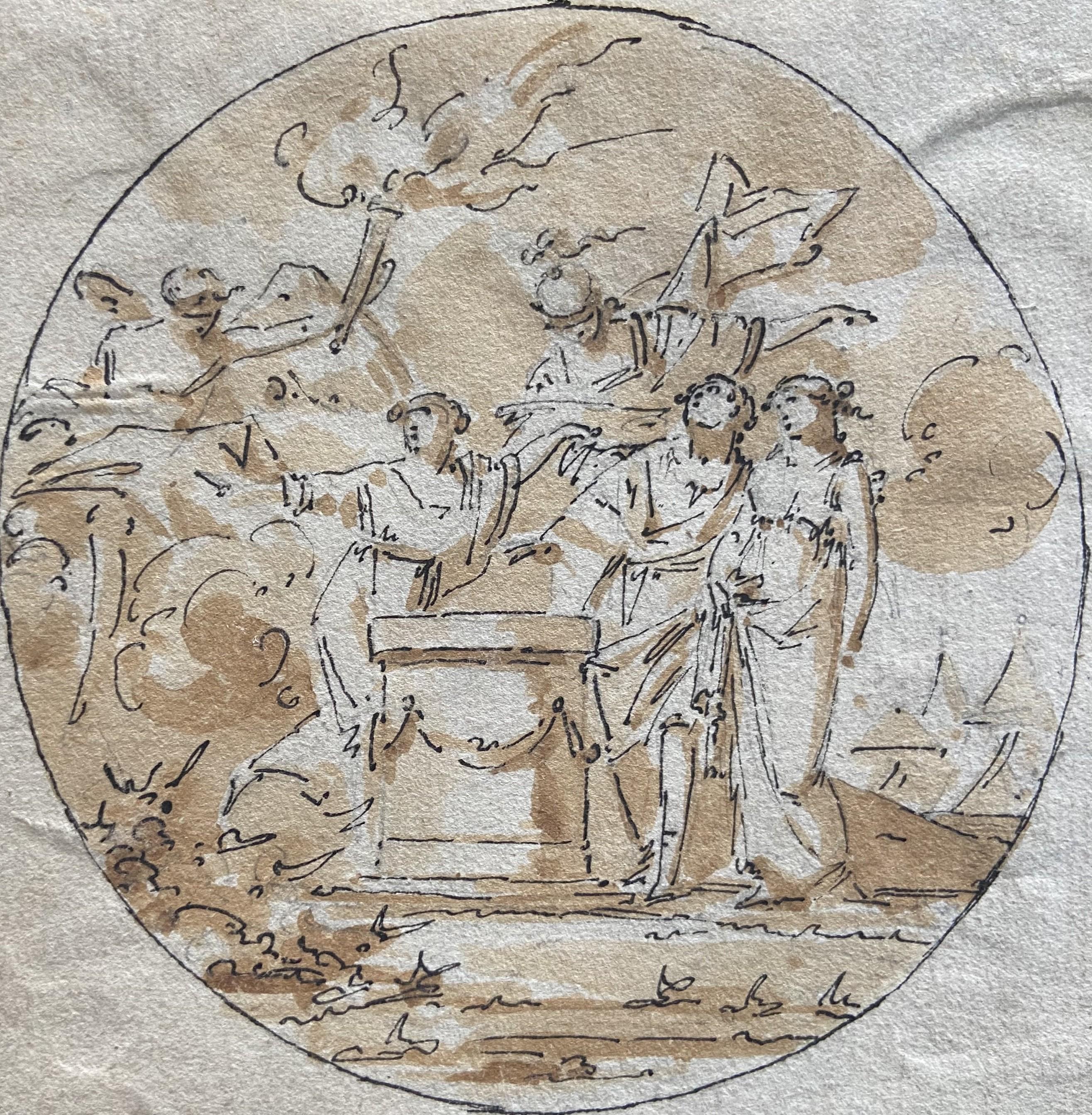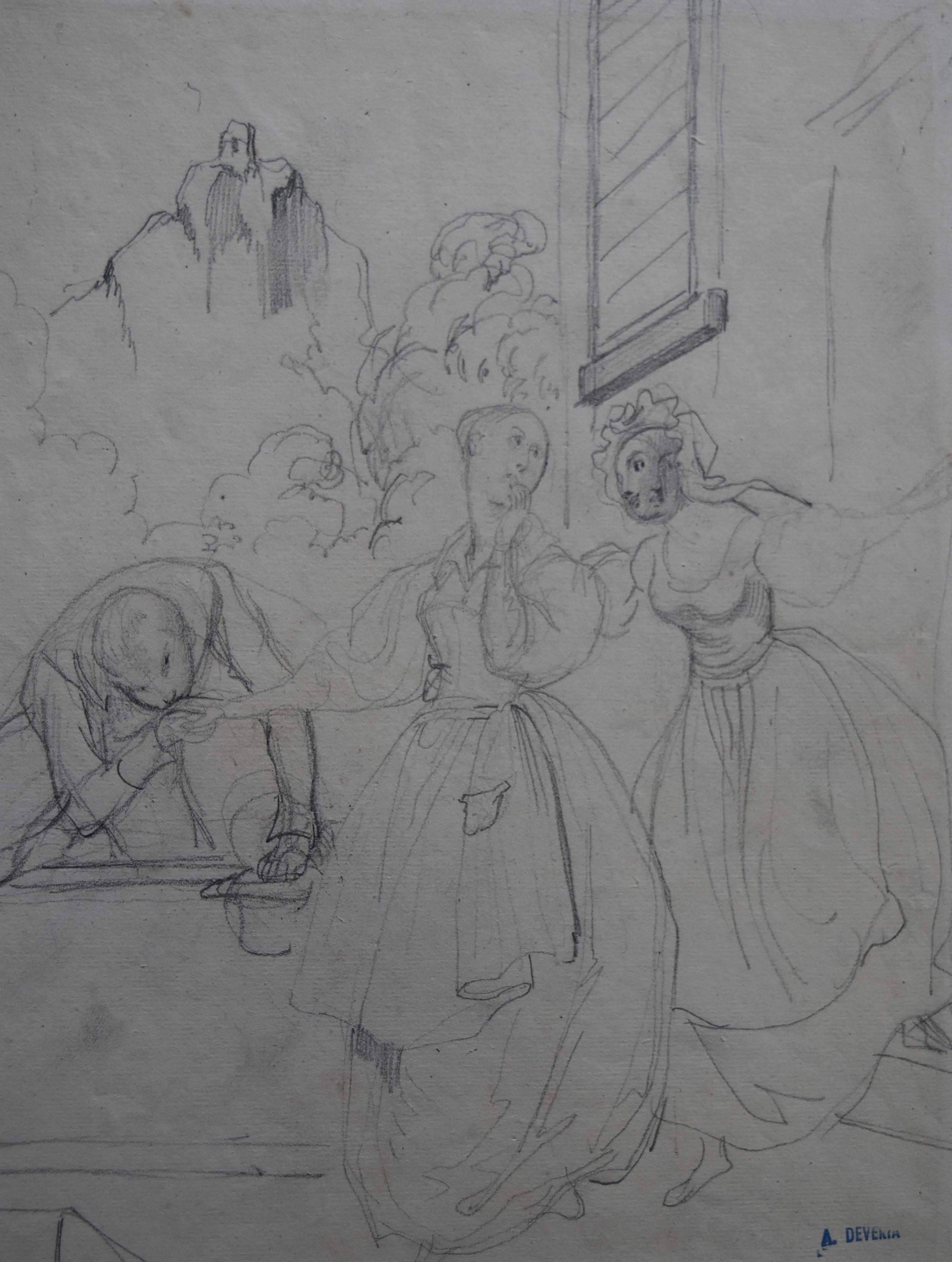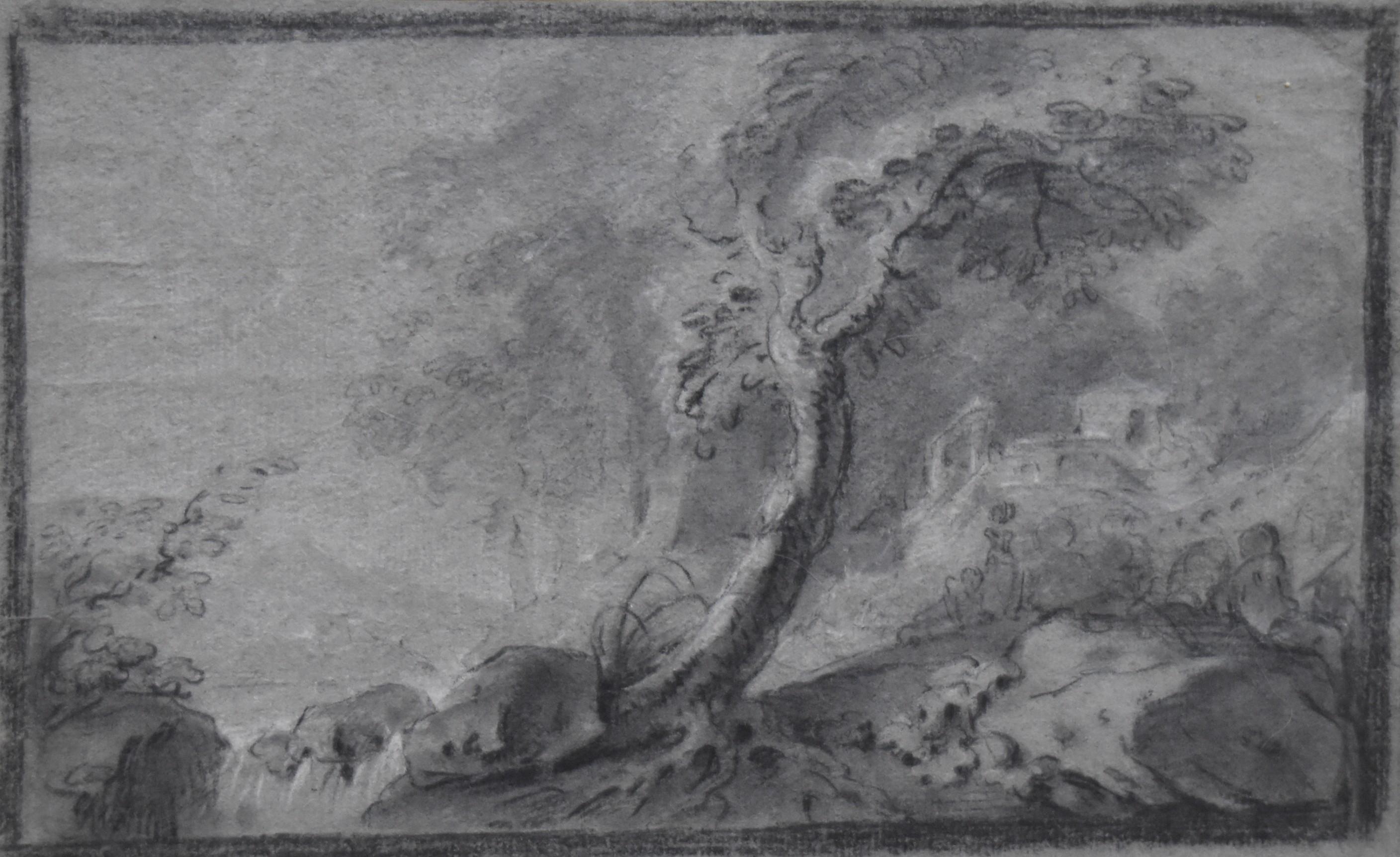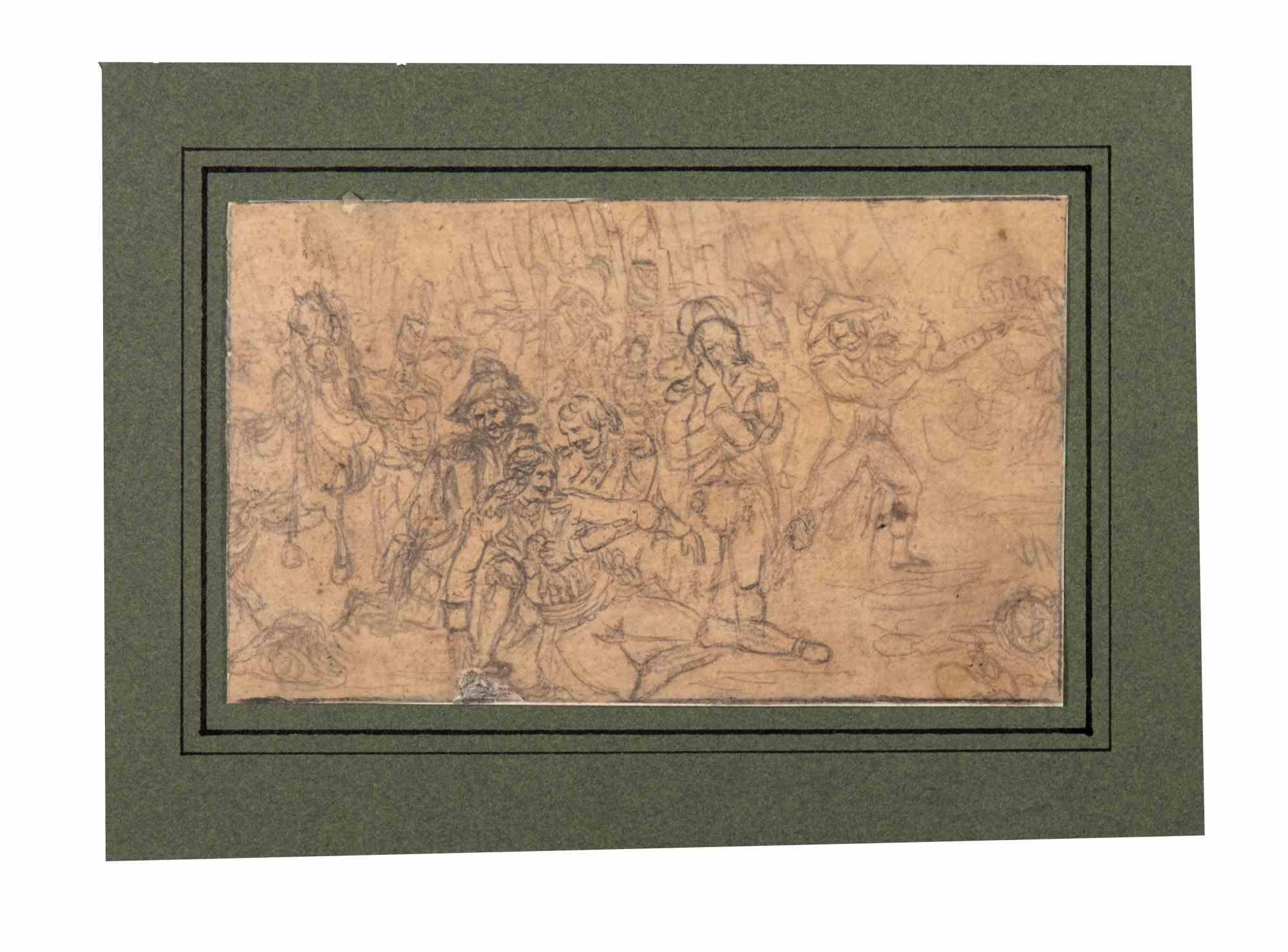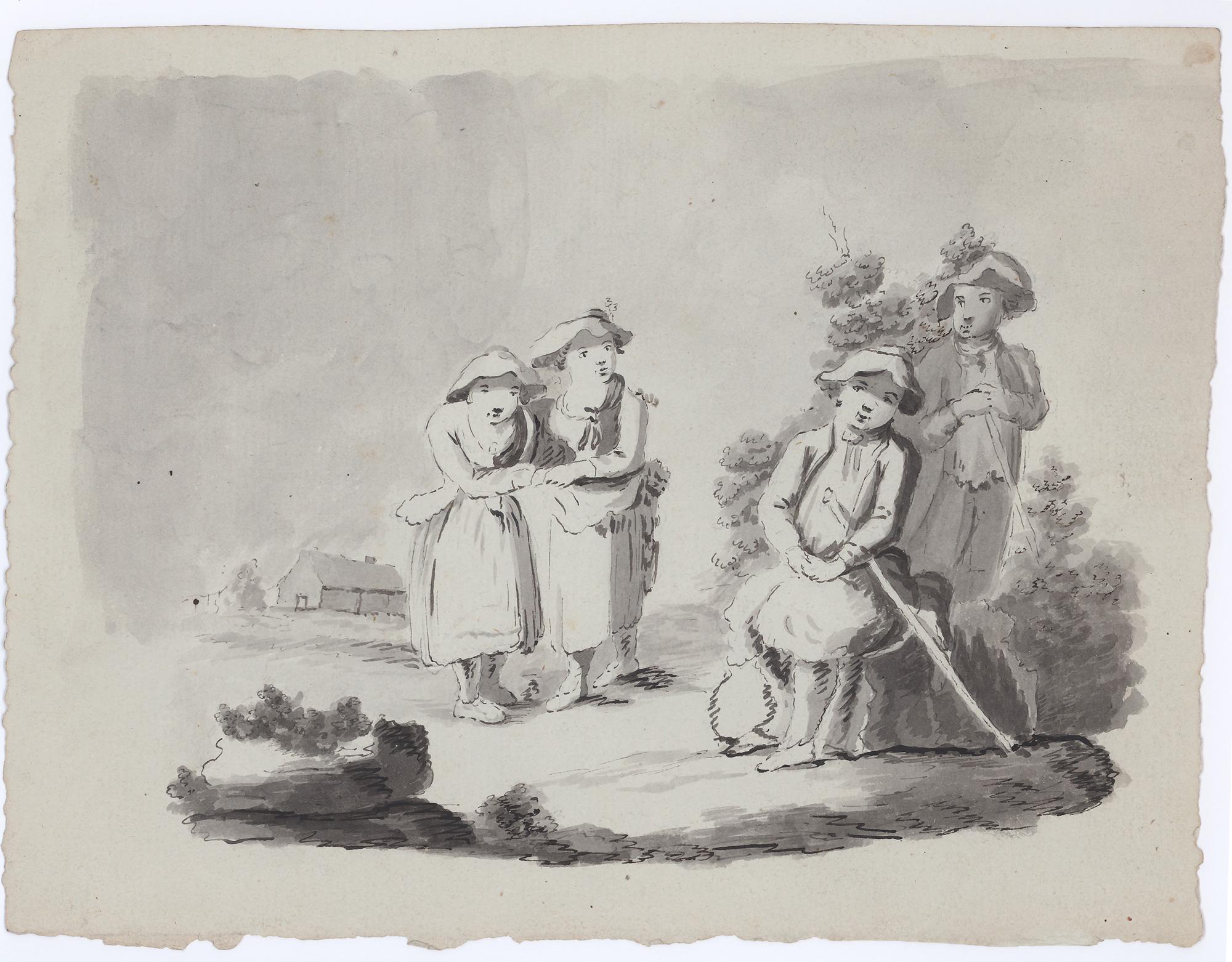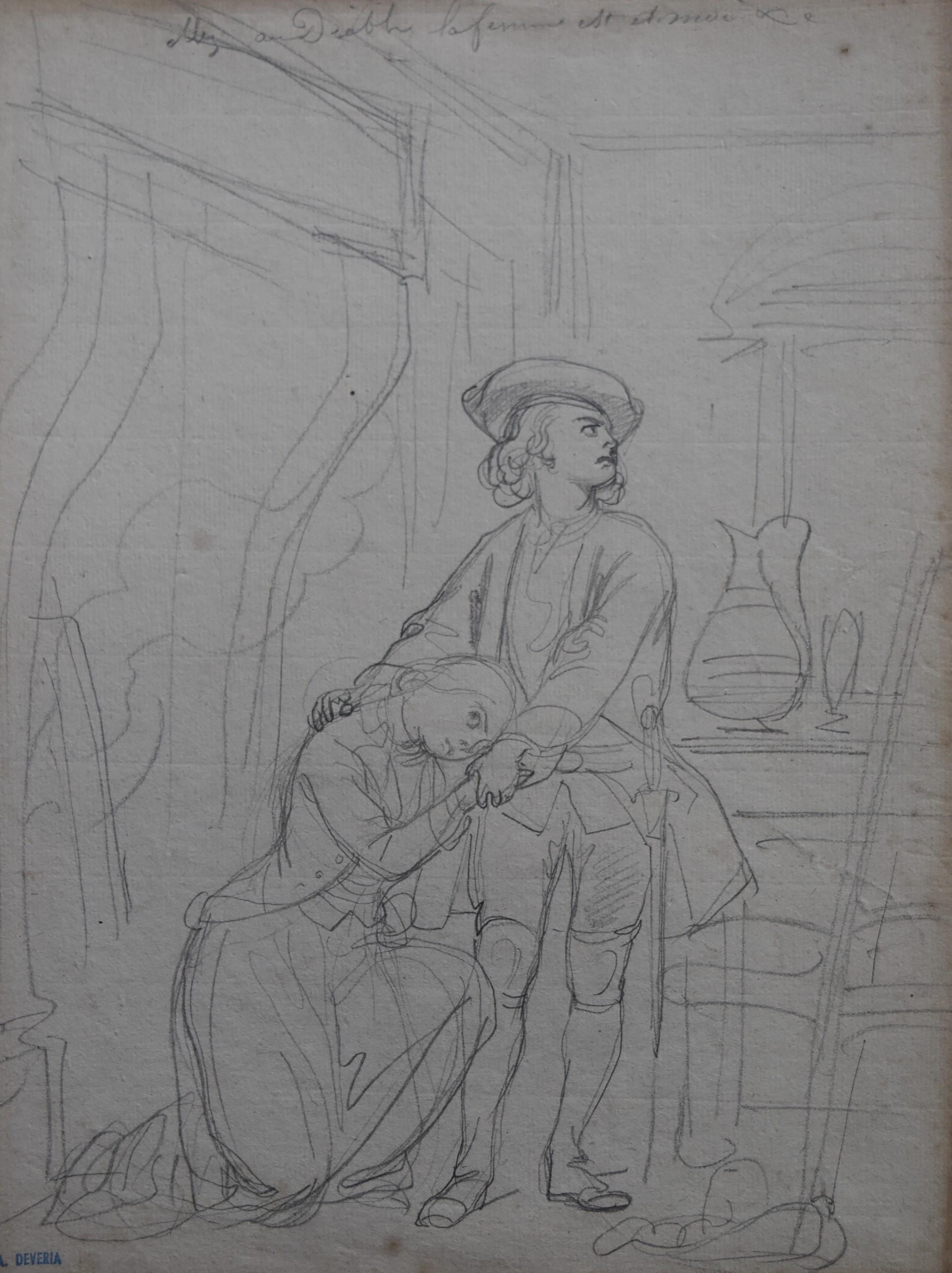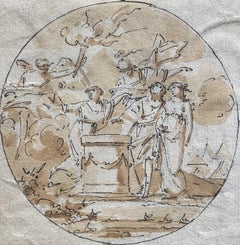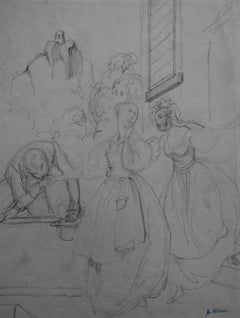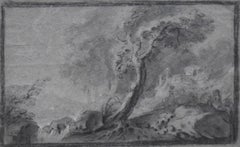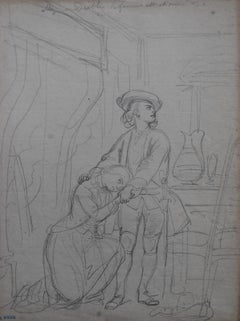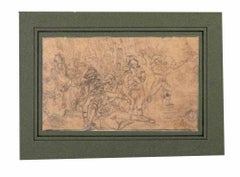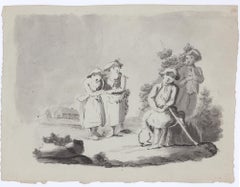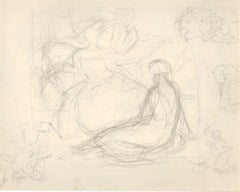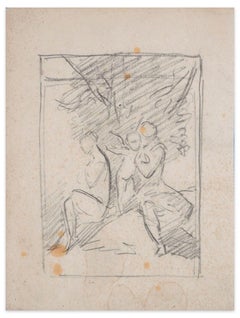Items Similar to France 18th Century, The Surprised Lovers, original drawing
Want more images or videos?
Request additional images or videos from the seller
1 of 6
UnknownFrance 18th Century, The Surprised Lovers, original drawingcirca 1770
circa 1770
$940.16
$1,175.2020% Off
£699.38
£874.2320% Off
€784
€98020% Off
CA$1,287.40
CA$1,609.2420% Off
A$1,431.41
A$1,789.2620% Off
CHF 747.40
CHF 934.2520% Off
MX$17,423.73
MX$21,779.6620% Off
NOK 9,536.53
NOK 11,920.6620% Off
SEK 8,935.27
SEK 11,169.0920% Off
DKK 5,968.16
DKK 7,460.2020% Off
Shipping
Retrieving quote...The 1stDibs Promise:
Authenticity Guarantee,
Money-Back Guarantee,
24-Hour Cancellation
About the Item
France circa 1770
Two lovers surprised in bed
Black chalk on paper
13 x 17 cm
Modern frame : 34 x 38 cm
This drawing had been attributed to Gabriel de Saint Aubin (1724-1780). It's a convincing attribution because of the quality of the drawing and its theme, but as there's no real historic proof of this attribution, it seems more cautious to place it in his time.
The theme, two young overs surprised by a lord, the father ?, the husband ? of the young woman, is typical of the end of 18 the century french culture. The people of this time were fond of libertine tales.
Painters such as François Boucher or Honoré Fragonard produced many of these works.
- Creation Year:circa 1770
- Dimensions:Height: 5.12 in (13 cm)Width: 6.7 in (17 cm)
- Medium:
- Movement & Style:
- Period:1760-1769
- Condition:
- Gallery Location:Paris, FR
- Reference Number:Seller: Inv 681stDibs: LU111224986131
About the Seller
5.0
Gold Seller
Premium sellers maintaining a 4.3+ rating and 24-hour response times
Established in 2018
1stDibs seller since 2019
248 sales on 1stDibs
Typical response time: 2 hours
- ShippingRetrieving quote...Shipping from: Paris, France
- Return Policy
Authenticity Guarantee
In the unlikely event there’s an issue with an item’s authenticity, contact us within 1 year for a full refund. DetailsMoney-Back Guarantee
If your item is not as described, is damaged in transit, or does not arrive, contact us within 7 days for a full refund. Details24-Hour Cancellation
You have a 24-hour grace period in which to reconsider your purchase, with no questions asked.Vetted Professional Sellers
Our world-class sellers must adhere to strict standards for service and quality, maintaining the integrity of our listings.Price-Match Guarantee
If you find that a seller listed the same item for a lower price elsewhere, we’ll match it.Trusted Global Delivery
Our best-in-class carrier network provides specialized shipping options worldwide, including custom delivery.More From This Seller
View AllFrench school 18th Century, A mytholological scene with a couple, drawing
Located in Paris, FR
French school 18th Century,
A mytholological scene with a couple,
Pen and brown ink, brown ink wash on paper
11.5 x 11.5 cm, diameter of the main scene : 10,5 cm
in a modern frame under glass : 33.5 x 33.5 cm
This drawing by a particularly talented 18th-century artist - as yet unidentified - is notable for its mastery of pen and wash...
Category
1760s Old Masters Figurative Drawings and Watercolors
Materials
Ink
$882 Sale Price
20% Off
Achille Devéria (1800-1857) A galant scene Original Drawing
Located in Paris, FR
Achille Devéria (1800-1857)
A galant scene
pencil on paper
Some stains (see photographs please)
Bears the stamp of the Achille Deveria Estate Sale o...
Category
1850s Romantic Figurative Drawings and Watercolors
Materials
Carbon Pencil
$335 Sale Price
20% Off
France 18th Century, Pastorale (Arcadian Landscape), original drawing
Located in Paris, FR
France 18th Century,
Pastorale (Arcadian Landscape)
Black chalk and heightenings of white gouache on blue-grey paper
19 x 31 cm
Framed : 34.5 x 46.5 cm
The atmosphere and the subje...
Category
1760s Old Masters Landscape Drawings and Watercolors
Materials
Chalk
$1,021 Sale Price
20% Off
Achille Devéria (1800-1857) Allez au diable, la fille est à moi Original Drawing
Located in Paris, FR
Achille Devéria (1800-1857)
"Allez au diable, la femme est à moi" (Go to hell, This woman is mine)
pencil on paper
annotated on the upper border "Alle...
Category
1850s Romantic Figurative Drawings and Watercolors
Materials
Carbon Pencil
French School 19th Century, A Muskeeter, original pencil drawing
Located in Paris, FR
French school 19th Century
A Muskeeter
Pencil on paper
26.5 x 17 cm
Bears a signature "F. Roybet" in the lower right
In quite good condition, bears some visible foxings,
In an old mount (some damages)
(not framed)
Even if the style, execution and of course subject are those of Ferdinand Roybet...
Category
1890s Academic Portrait Drawings and Watercolors
Materials
Carbon Pencil
$235 Sale Price
20% Off
19th Century French School, Studies of horses and small scenes, original drawing
Located in Paris, FR
19th Century French School,
Studies of horses and small scenes,
pencil on paper
14.5 x 21 cm
Framed : 25.5 x 32.7 cm
This study sheet, which brings together studies of horses and...
Category
1850s Romantic Animal Drawings and Watercolors
Materials
Pencil
You May Also Like
Figures - Drawing by Denis Auguste Marie Raffet - Mid-19th Century
By Denis Auguste Marie Raffet
Located in Roma, IT
Figures is an Original Pencil Drawing realized by Denis Auguste Marie Raffet (1804-1860).
The little artwork is in good condition included a green cardboard passpartout (32.5x50 cm)...
Category
Mid-19th Century Modern Figurative Drawings and Watercolors
Materials
Pencil
The Introduction, French School, 18th century
Located in Middletown, NY
In this charming scene a maid appears bashful as she is introduced by her mother to the shepherd’s son.
Ink and wash on hand made, cool-toned cream laid paper, 6 3/4 x 8 7/8 inches...
Category
Mid-18th Century French School Figurative Drawings and Watercolors
Materials
Ink, Watercolor, Handmade Paper, Laid Paper
Sketched Scene - Original Drawing - Early 20th Century
Located in Roma, IT
Sketched Scene is an original artwork realized by an Anonymous French artist in the first years of the 20th century.
Pencil on paper. Cardboard passepart...
Category
Early 20th Century Modern Figurative Drawings and Watercolors
Materials
Paper, Pencil
Family - Original Pencil Drawing Late 19th Century
Located in Roma, IT
Image dimensions 14.5 x 12 cm.
Family is an original pencil drawing on thick cream-colored paper, realized by an anonymous French artist of the end of the XIX century.
A nice drawi...
Category
Late 19th Century Modern Figurative Drawings and Watercolors
Materials
Pencil
Figures - Original Drawing By Pierre Georges Jeanniot - Early 20th century
By Pierre Georges Jeanniot
Located in Roma, IT
Figures is an original Drawing on paper realized by painter Pierre Georges Jeanniot (1848-1934).
Drawing in Pencil.
Hand-signed on the lower.
Good conditions.
Pierre-Georges Jean...
Category
Early 20th Century Modern Portrait Drawings and Watercolors
Materials
Pencil
Figures - Original Pen Drawing - Early 20 Century
Located in Roma, IT
Figures is original drawing in pencil on ivory-colored paper realized by an anonymous artist in early 20th Century.
Hand-signed on the lower, illegible.
Good conditions except for ...
Category
Early 19th Century Modern Figurative Drawings and Watercolors
Materials
Pen
More Ways To Browse
French Culture
Two Lovers
Old Master Drawings Framed
Fragonard Painting
Old Antique Bed
Old Antique Beds
18th Century French Beds
Old Antique Bed Frames
Libertine Libertine
1780 French Beds
Celia B Michelena
Edwina Mountbatten
Glenora Richards On Sale
Joseph Dirand
Jean De Gavardie
Studio Peregalli
California Painting
Italian Fine Art
